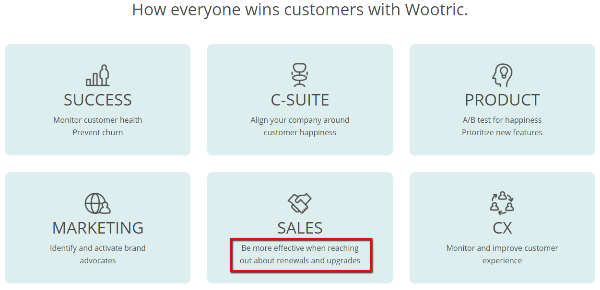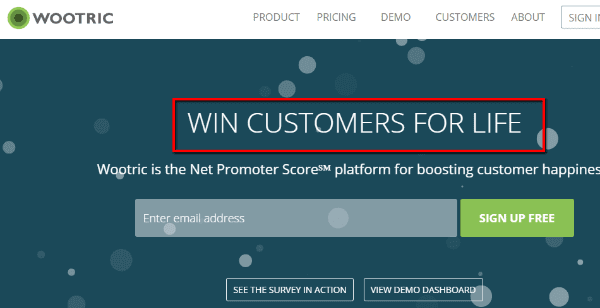Are your design mockups filled with “Lorem ipsum lorem ipsum”? I don’t blame you if they are. It’s an easy way to fill space. I mean, you’re a designer, not a copywriter, right?
Well, kind of. The problem is that it’s not really possible to entirely separate design from copywriting. So, if you want to design effectively, you need to know a bit about copywriting. And if you dive deeper into copywriting, you can even start offering copywriting as an additional service to clients.
You won’t become an expert copywriter from reading one post, but I hope to at least leave you with a cursory understanding of some basic copywriting concepts you can use to add the written word to your designs.
Why Web Designers Need to Care About Copywriting
We’ve already covered the definition of copywriting in a previous post. But a super quick refresher – in its most basic form, copywriting is the act of creating a set of words that move people to complete a certain action.
That “moving people to complete a certain action” part sounds a lot like what makes a good web design, right? No matter whether you want readers to buy a product, read more blog posts, or anything else; if your web design isn’t moving readers to complete the actions they’re supposed to, it’s not very effective.
Copywriting and Design Affect Each Other
David Ogilvy himself, the father of advertising, could write copy for a website, but if the design has a neon yellow font on a neon green background, those words aren’t going to do squat. Conversely, the best design isn’t going to push people to buy if the only text reads “Product Good. Buy It.”
If design and copywriting aren’t working together, they’ll hold each other back. Period.
Copywriting Tone and Design Tone Need to Match
You certainly know that you can create a tone with your design. Well, it’s the exact same with copywriting. If you’re creating a fun, playful design, the copywriting needs to be fun and playful, too. Otherwise, readers will be left feeling confused. And confused readers do not customers make.
The Basics of Copywriting for Web Designers

Image by 0beron / shutterstock.com
Now that you know why web designers need to care about copywriting, here’s your crash course on website copywriting. Whether you want to start offering copywriting to your design clients, or just want to understand where your copywriter is coming from, here’s what goes into good copy.
Great Copy Starts With Research
Just like you go through designs and mockups before creating your final product, copywriters don’t just start putting pen to paper right away.
Good copy always starts with research. There are two main areas you’ll want to look at:
- Competition – what does the competition’s website copy look like? What’s their tone and how do they try to differentiate themselves? You need to find the place where your copy can stand out from the competition.
- Customers – what do customers/users say? Oftentimes they have insights that your client won’t. It’s great to be able to actually talk to customers, but that’s not always feasible. But you can still read forums and customer reviews to understand how people feel.

Browse customer reviews for tips on what they might want to see in your copy.
Once you complete the research, you can start developing an idea for where to focus your copy.
Create a Draft by Focusing on These Concepts
Once you’ve got the research out of the way, you can start creating a draft for your copy. At a minimum, here’s what you need to consider when writing out web copy:
Benefits matter more than features:
People always want to know what’s in it for them. Don’t focus on features, instead hammer home the real benefits associated with those features. For example, if you’re designing a page for a hair salon, which sounds more beneficial?
“4 haircutting stations”
OR
“Never wait in line thanks to 4 separate haircutting stations”
The second tells potential customers exactly how they benefit. The first just lists a feature with no context.

Your copy needs to be benefit-oriented.
You need a USP (Unique Selling Proposition):
A USP answers the very important question on most potential customers’ minds, “why should I choose you and not the other company?”
It needs to be short and attention-grabbing. The USP is usually some of the most prominent text on a page. If you’re creating a landing page, you’ll typically want to make the USP the main headline or subheading:

Wootric gets right to the point with their USP.
Focus on You:
Good copywriting should always focus on the reader by using “you.” For example, both these lines communicate the same idea:
- “Our product saves users one hour per day.”
- “You’ll spend one less hour working per day.”
Despite being the same idea, the second sentence makes the benefit much more personal by incorporating “you,” the potential customer, into the copy.
Revise and Proofread
Once you finish your draft copy, it’s time for the next step:
Go to sleep.
Seriously, take a night and sleep on it before you even think about looking at it again. Stepping away from your writing for a bit makes it much easier to look at it with a critical eye.
Once you wake up, it’s time to:
- Ruthlessly cut
- Proofread
By ruthlessly cut, I mean remove all the filler words and unnecessary phrases from your copy. You can also use AI rewriter tools to help you revise content, consolidate ideas and hone in on the right balance. Website copy needs to be lean and mean. While it’s the same with most writing mediums, website copy has far less room for error.
Once you’ve cut out all the filler, it’s time to proofread. You need to proofread like crazy. Read it out loud. Read it backwards. Run it through Grammarly. Send it to a friend.
Spelling errors are never good, but they’re a lot more forgivable in a blog post than in “permanent” web copy. A study in Great Britain found that 59% of people wouldn’t use a website that had obvious spelling mistakes. So, if you accidentally let a few spelling errors slip through, your clients or customers definitely won’t be happy, especially since it can directly affect site performance.
Further Reading for Copywriting
If you want to dig even deeper into copywriting, here are three great resources:
- 7 of the Best Blogs for Learning Copywriting
- Copywriting 101 from Copyblogger
- The Definitive Guide to Copywriting from QuickSprout
Wrapping Up
Just like a copywriter won’t become an expert web designer overnight, you’re not going to instantly become a world-class copywriter in a day. But at the very least, you can become competent enough to create designs with text that’s at least a little bit more persuasive than “lorum ipsum!”
And because you know the basics, you’ll be better suited to craft your designs to accent and complement your web copy.
Now it’s your turn. Do you generally write copy for web design clients? Or do you hand a site over with filler text?
Article thumbnail image by Bloomicon / shutterstock.com









Wow this is like Copy 101. I will also recommend copyblogger. You cannot stress more on proofreading, it is so so important. thanks again.
It’s really heartening to read a blogger who isn’t trying to pad words. Something I always try to do when I write is tell a story. Stories work every time they’re used.
Thanks for a great post.
In this I we all have strengths and I know mine is NOT copy. I have been in sales FAR TOO LONG. I look to places like FIVERR to let those who that is their skill and talent do the copy. The other thing is I provide links like the above and give those to my clients and let them write their own copy as apart of their homework before I start their project. This way they can update it themselves if they want. If they are to busy I just outsource it.
For me the key in copywriting is to put the focus in beenfits an features of the product without “oversold” the arguments.
Hi Brenda,
This is a solid piece for anyone writing online copy. The examples are specific and helpful. Pros can use the reminders.
I teach the subject and would love to use this article as a handout for my students — with enthusiastic citation of course. I’m also tweeting it. Good job and please keep writing.
Cordially,
Dawn
There are other reasons a web designer might want to know about copywriting:
1. Promoting your own services and themes and such — if you don’t have the funds to hire a copywriter, knowledge about how to write copy to promote your products is a good plan B.
2. I know I have clients who think they can write and would never hire a copywriter. I try to suggest changes or just write it the way I think it should be written (when they haven’t given me exact copy). I think this happens especially with really small businesses. They’re never going to hire a copywriter, so their choices for copywriting are either they write it or I write it, and if I have some knowledge, I can help them make it better.
The trick of writing to the audience, focusing on benefits to the user rather than features of the product, is huge and will make the copy much stronger, even if it’s not as polished as a professional copywriter might write.
The key to Mike’s reply is, if i may, understanding what, exactly, are your customer’s or market’s pain points. Indeed understanding your customers before you define their pain point (for them). There’s a clear hierarchy of needs/pain/people involved in all this. As ever Marketing is the key.
Cheers to both Brenda and Mike
Stephen Silk, Stoke on Trent, England.
To be honest, I wouldn’t recommend someone offering copywriting as a service if they are primarily a dev who’s going to do it on their own. I’ve made my living as a writer (and now creative director) for 21 years. And while I coded my first website 20 years ago, I wouldn’t dream of selling myself as a dev. I can sell myself as someone who knows how to speak with devs and understands how things work, etc. Did I do the dev work on jasonfox.net and adsavior.com myself? Yes. Did it take me five times longer to do than a bona fide dev? No. It took seven. By all means, I encourage people to study and try a hand at the disciplines outside their core that impact what they do — nothing kills a great-looking site like banal language. But if you’re not doing that discipline full-time, as well, chances are you’re not going to get to the level to you need to be at to charge for it. Hire someone and mark it up.
Nice write up Brenda. Just to continue building on the benefits piece, it’s easy for many of us to come up with a long list of benefits our products and services provide customers.
What I heard is a good practice is to focus on targeting the #1 and #2 pain points of your customers rather than trying to address everything. Your message will be much stronger and communicate to the most critical areas of your customers
I found this article informative and clear. Adcopy is more important than most understand.
Creating copy that moves the prospect along to the desired result pays great benifits.